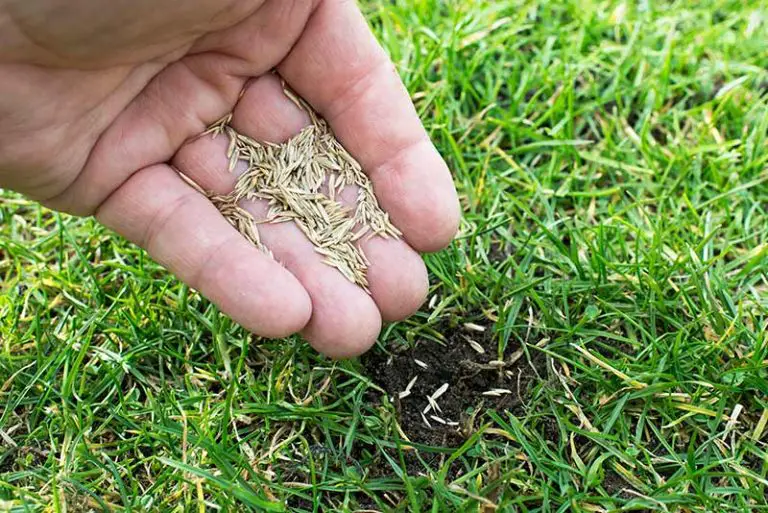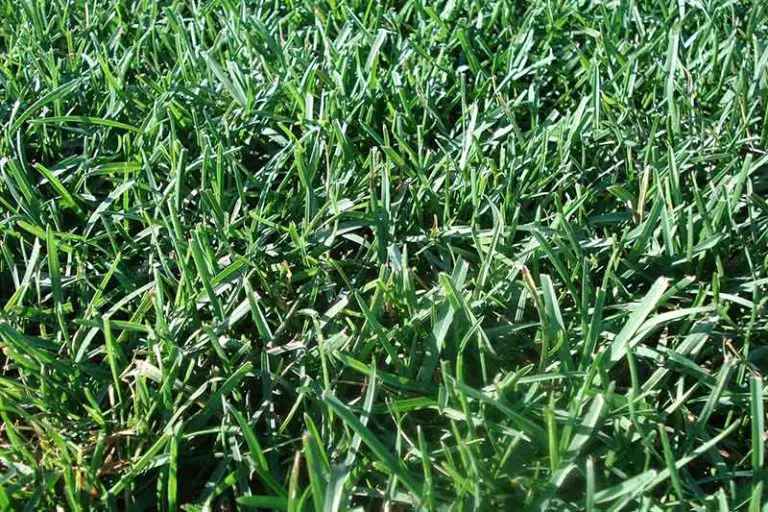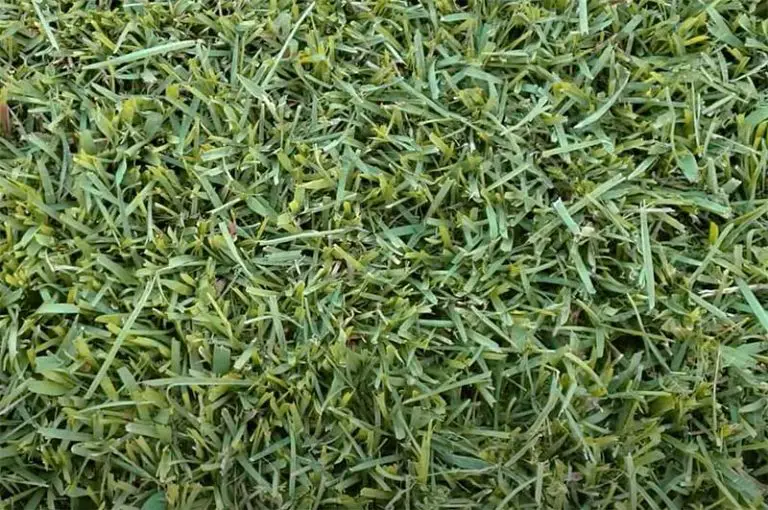Can You Just Sprinkle Grass Seed on a Lawn?
When it comes to growing and maintaining a lawn, one of the few tasks which will keep reappearing is the need for more grass seed to be planted. Grass may become patchy and bare during harsh weather if maintained incorrectly or no more grass is planted.
One can sprinkle grass seed on a lawn without any additional measures taken, but it risks preventing germination or taking an extended period of time for germination to occur.
Can you Sprinkle Grass Seed on top of Soil?
Spreading grass seed on top of soil isn’t inherently wrong or incorrect- it can still lead to germination. The growth process may be hindered slightly by the inconsistency presented when grass seed has simply been sprinkled atop of soil, rather than buried appropriately. This is because several factors can affect the seed germination if it is left atop of the soil.
These factors include:
- Delayed germination – Once the grass has been scattered over the soil, the cool, dry air may dry out the new grass seeds, preventing it from germinating as normal.
- Animals – Animals want nothing more than a quick snack. Critters such as birds, squirrels or even mice will find these seeds and see them as an easy meal. By leaving them uncovered, you risk letting the local wildlife get to them before they have the chance to sprout.
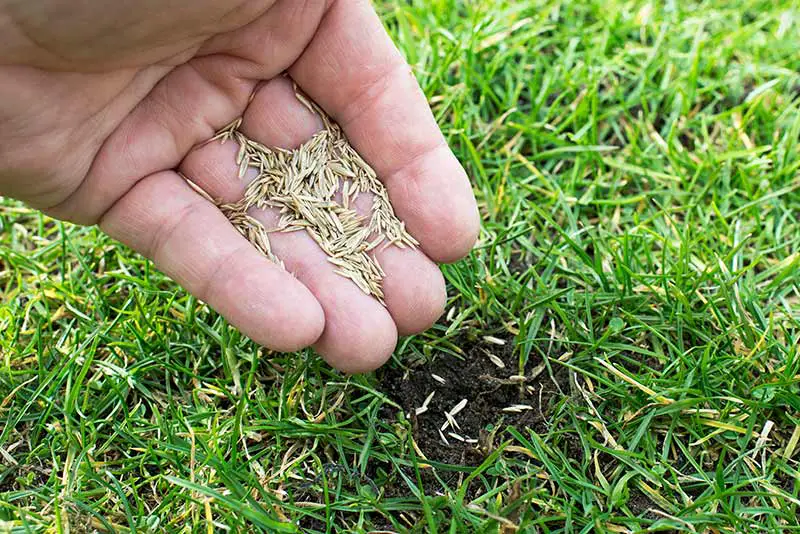
Why Should I Spread Grass Seed?
Not only does a thicker, greener lawn look appealing, but grass seed can also be spread as a means of bolstering your lawn’s health and density. Healthy, fast growing grass provides better protection against lawn fungi, weeds and other lawn diseases such as red thread. Whilst these issues can be combated using spot treatments or weed and feed, the first step to keeping issues at bay is to ensure that your lawn is strong and able to withstand them to the best of its abilities.
Taking advantage of fertilizer can also improve your lawn’s look and health. The best fertilizers are those that work by improving the nutrients that your grass needs to feed on.
How to Spread Grass Seed
Knowing how to spread grass seed correctly can help improve germination times, and see less grass seed go to waste.
The best way to spread grass seed is to make sure it is covered by a very fine layer of topsoil. This prevents any animals eating it, and allows it to germinate quicker and more successfully.
Spreading grass seed can be done in several different ways. Most commonly used is the easiest method of simply throwing it onto the ground. This is best done over small areas as opposed to large ones, which may require equipment or machinery to launch the seed across large areas. If sowing by hand, simply pour the grass seed into your palm and distribute it around the area which you are seeding. Grass seed is best planted half an inch apart, but you obviously don’t need to measure this. This measurement can simply be used as a way of assessing whether or not enough seed has been planted in the area.
Once these seeds have been sown, they need to be covered to ensure that they have the best chance of survival. The best covering for these seeds are the following:
There are many more tips and tricks out there detailing how to plant grass seed
When Should I Plant Grass Seed?
Grass seed is best planted during times of the year when the germination process is unlikely to be negatively affected by the weather. This means that one should avoid planting grass seed during times of heavy rainfall, drought or during particularly cold weather.
Planting Grass Seed in Fall
Fall is a good time to plant grass seed due to the mild weather. It allows your grass to recover from the dry weather in summer in preparation for winter. As a result, the best time to plant grass seed in the fall is during September/ early October. A gentle rainfall can also help water your grass seed, meaning you won’t have to spend time watering it as often.
Planting Grass Seed in Spring
Spring is also a perfectly viable time to plant grass seed. Any time around March/April is great for sowing seed, especially as April showers may water it adequately as well. This gives your lawn the chance to grow and survive through any long or dry summers without looking as worse for wear as it would have had it not been seeded beforehand.
How Often Should I Water Grass Seed?
Water is essential for plant growth, and it is no different when it comes to grass seed. Knowing how often to water grass seed is essential for ensuring that the grass grows substantially and as well as it possibly can. Take into consideration the time of year which it has been planted and whether any light showered has or will occur that may change your watering schedule. Watering grass seed should be a gentle process, preferably using a gentle hose or a soaker sprinkler. Generally speaking, you should water your grass seed once every other day.
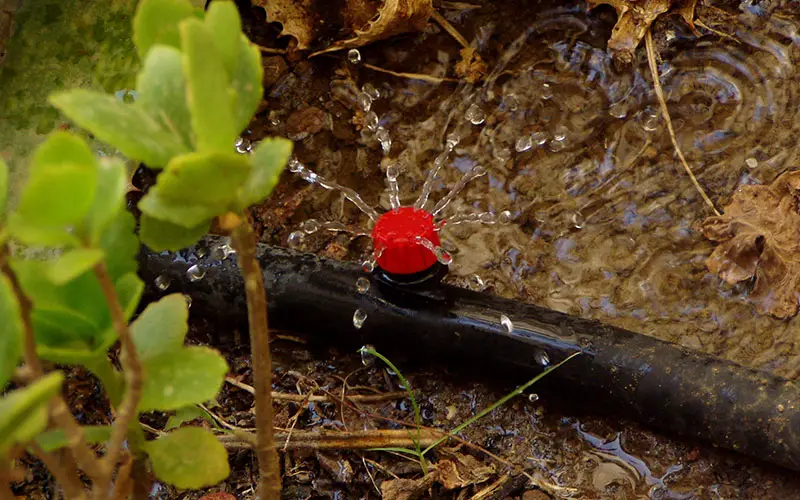
How Long Does it Take Grass Seed to Germinate?
Depending on how it’s planted, grass seed may take a variety of times to germinate. It often takes longer if left uncovered, which can be upwards of a month.
The speed in which it takes grass seed to germinate can depend greatly on the type of grass which you are planting. For instance, rye grass can take up to 5 days, Kentucky bluegrass can take upwards of 2-3 weeks, and Bermuda can take over a month with proper care and covering.
You can speed up germination by ensuring that your grass seed is adequately covered and watered correctly and consistently. It’s also important to note that if you are planting a mixture of grass seeds, it will take different times for each type to germinate.
When Can I Mow New Grass?
Mowing the lawn regularly is one way to make sure your grass is both healthy and aesthetically pleasing. Neat, even grass is unlikely to require aeration or dethatching. However, it’s important to know when to mow new grass.
New grass will need to be ready for its first mowing, lest you inflict any unnecessary damage to it or stunt its growth.
The best way to tell when it’s time to mow your new grass is by judging its height. Once it has reached above 3-4”, it’s the right time to mow it. After the first mow, you should keep up with a regular mowing schedule. This will likely see you mowing every 5 to 7 days throughout the growing season.
The recommended height for mowing most lawn is approximately 2-4”, meaning that once the new grass has grown beyond that height, it is able to be mowed safely.
When To Fertilize New Grass?
Fertilizing grass can be somewhat unnerving as it is very easy to burn or damage grass in the process by using too much of the solution. When it comes to fertilizing new grass, the best way to calculate when it is old enough to be fertilized is basing it on how many times it has been mowed.
Grass that has been mowed at least 6 times should be robust enough for fertilization. It’s recommended that you use organic fertilizer to ensure that any harsher risks are avoided. Even if you don’t have pets, most pet-safe fertilizers are organic by default. Always make sure to check labels on fertilizer to ensure that it is suitable for your garden and that each necessary precaution is taken when using it.
Final Thoughts
Whilst it is entirely possible to simply spread grass seed atop of the lawn without coverage, it may lead to wasted grass seed which will never germinate. The best thing to do when sowing grass seed is to ensure it is covered by either a thin layer of topsoil, screened compost, straw or an erosion mat to ensure its chances of germination and growth are at the highest they can be.


